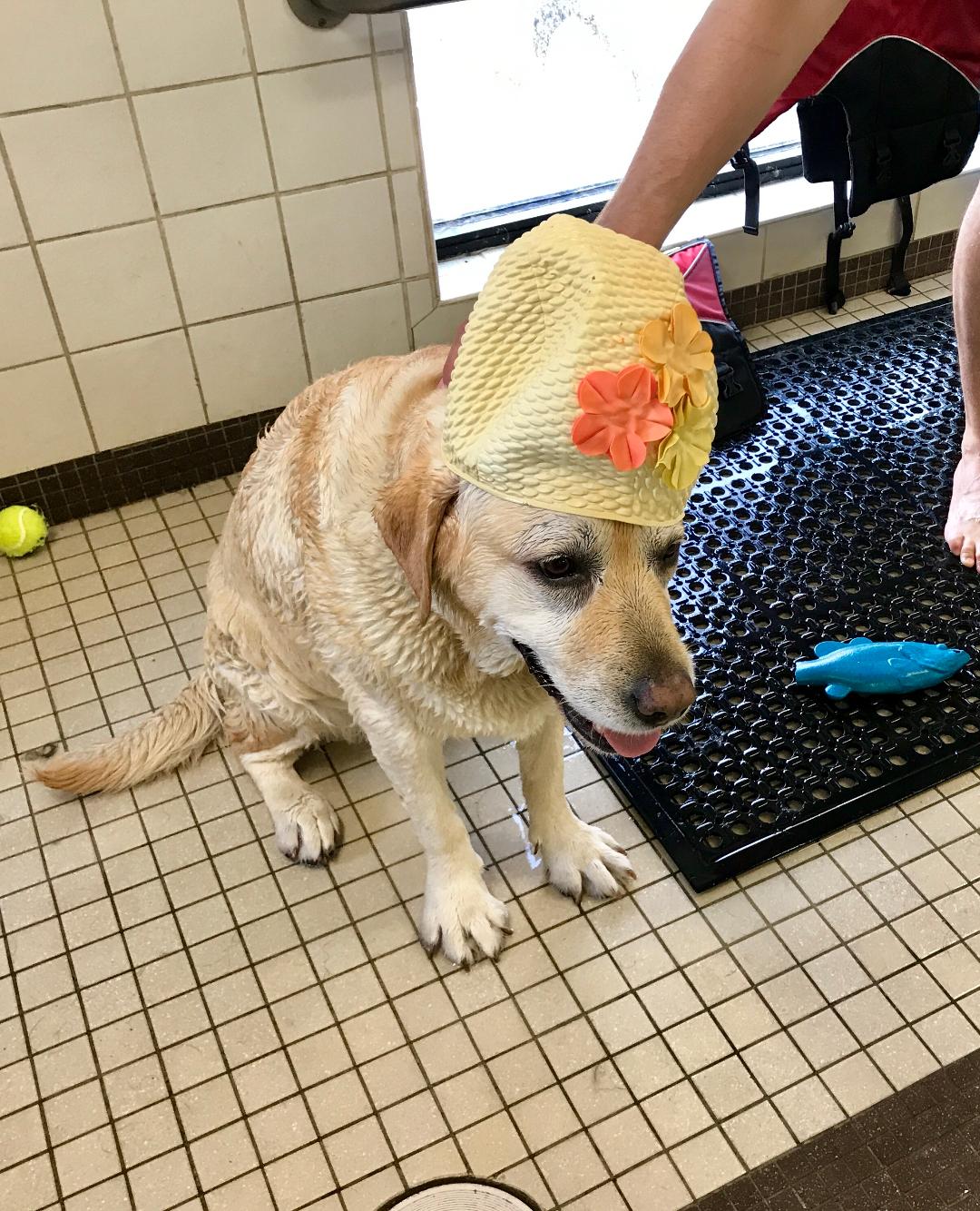by Mary Schwager
Oh, the doldrums of winter! It’s that time of year we all feel out of shape, and for most of us living in the United States it sure isn’t swimming weather, even for our dogs.
But if your Lab is itching for some exercise, has arthritis, or has an orthopedic injury you’d like to mend, swimming is not only good for them, there’s a good chance a heated, indoor pool designed for dogs is just what the doctor ordered.
Experts tell us the number of dogs now bobbing on underwater treadmills and paddling their way through pools across the country is on the rise.
“It’s a cornerstone for physical therapy, cardiovascular therapy, weight loss, and for some orthopedic issues,” Jeffrey Evans, veterinarian and medical director at Boston Animal Hospital said.
You’ll hear it called hydrotherapy, pool therapy, swim and water therapy; this author’s dogs just think it’s fun time.
And for that black Lab, Solly, who has with major league arthritis, he just thinks he’s being doted on by girls in a pool and has no idea he’s getting great exercise. The yellow one, she is comic relief and tests the patience of the instructors by dive bombing swim sessions.
Living in the Northeast, Solly spends considerable time each summer swimming and building up muscle mass in his hips. By December each year, when the local lakes ice over, it’s depressing to see that muscle disappear considerably and his leg strength decrease.
So it’s off to swim therapy he goes. Not only does he move around seemingly pain-free in the water, you can really see some of his muscle mass returning.
Why can swimming be so beneficial for Labs, who are so prone to arthritis and hip dysplasia? “With an unstable joint, if you can support the muscles, you can support the tendons,” Evans said. “If you can build up the muscles, you can strengthen the tendons. If you can help support those joints, that helps.”
And water therapy isn’t just for dogs with arthritis. Experts say it helps Labs, who can be notorious for being overweight, burn off calories and energy. It’s even beneficial for Labs waiting to have orthopedic surgery or who are recuperating.
“If you have a dog that’s waiting for surgery, talk to your vet about water therapy,” Evans said. “The dog may be on strict rest pre-surgery, but swim therapy might be an option. We don’t want them running around and putting pressure on [the affected area], but you should ask about swimming.”
But what do you do if your dog isn’t that into swimming? Lure them with food is one option. Labs, as you know, will do about anything for something to eat.
“We think of Labs as being born to swim,” Evans said. “But believe it or not, some need encouragement. One option is hydrotherapy on a submersible treadmill and to coat the wall with peanut butter.”
Of course, check with your veterinarian before you start swim therapy.
“A small amount of dogs may be at risk doing it,” Evans said. “Maybe a dog with a long history of urinary tract infections, or ear and skin infections. If they have laryngeal paralysis you don’t want them to dive in, you’d worry about aspiration.”
If your dog doesn’t like to get his head wet, or you want to avoid getting his ears in the water to avoid those seeminly chronic Lab ear infections, there are even little head floaties to help.
Solly’s sessions cost an average of fifty bucks, and he goes once a week. Is that $200 a month worth it? Seeing him so happy and knowing it’s helping his hips, that’s priceless. And the good news is: If your dog can swim without supervision, in the summer, swim team is free!
AUTHOR
Mary Schwager, aka WatchdogMary is a TV and print journalist now watchdogging for animals. Honored to have won 14 Emmy, 7 Edward R. Murrow and Associated Press awards for investigative reporting & writing. She loves tips, send your story ideas to www.watchdogmary.com.








